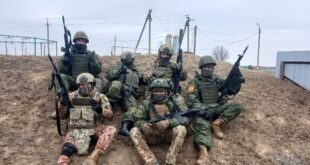At a time when several Turkish specialists and experts indicate that Syrian-Turkish rapprochement is accelerating remarkably and will soon witness several key changes, the problem remains in the Hay’at Tahrir al-Sham (HTS) and its leader, Abu Muhammad al-Julani. Not long ago, Julani enjoyed good relations with Turkey and participated in military coordination in northwestern Syria. At the same time, Turkey has introduced measures aimed at containing the opposition – whether military, as represented by the National Army, or political, as represented by the Syrian Opposition Coalition and the Interim Syrian Government.
Al-Julani announced very early that he rejected the Syrian-Turkish rapprochement completely. He called on the factions of the National Army to cooperate with HTS in a statement that analysts considered an attempt to create a new military situation intended to obstruct this rapprochement.
In this context, the Lebanese newspaper Al-Akhbar quoted field sources as saying that “officers from the Turkish army and intelligence held three meetings with the HTS in the past few days.” The sources noted that “Julani again pledged to secure the road and not to prejudice the Turkish positions. The Turkish delegation received a set of questions that Al-Julani wants answering,” among which is the possibility of bringing Julani and his group into the path of a political solution. Julani has not yet received any responses from them.
The other option is to withdraw from Idleb to the areas of the northern countryside of Aleppo, where he recently secured a foothold. Al-Akhbar indicated that Julani is preparing for the next stage, which may include his withdrawal from several areas in Idleb countryside, on the lines of contact with the positions controlled by the Syrian army, in exchange for further expansion in rural Aleppo.
Will Julani move to the U.S. camp in eastern Syria?
Al-Akhbar’s sources indicated that there are several discussions in opposition circles about the possibility of engaging Julani and his group in battles with the SDF. “This matter requires bringing together a unified operations room that brings together all factions, which is an outlet that Julani deems acceptable,” the sources said. “This approach ensures the continuation of Julani’s and his group’s presence, especially since he has taken during the past three years great steps to shake off associations with al-Qaeda. He has removed impressions of militancy from the areas under his control.” The sources further noted that “in the presence of actual channels of communication between Julani and Washington, it was clearly evident in the assassination of ISIS leaders, including the organization’s most prominent former leader Abu Bakr al-Baghdadi, who was assassinated by a U.S. force in an area under HTS control, in the countryside of Idleb near the border with Turkey. The coordination was also evident in the assassination of Baghdadi’s successor Abdullah Qardash, also known as Abu Ibrahim al-Hashemi al-Qurashi.
It is noteworthy that HTS – and other armed factions rejecting the Syrian-Turkish rapprochement – have moved from the stage of discussing the possibility of this rapprochement to discussing their fate after it has occurred. Some are heading to the option of accepting the fait accompli, especially after the Syrian Interim Government issued a statement yesterday in which it welcomed the rapprochement. In addition, Turkish Defense Minister Hulusi Akar released a statement warning against inciting demonstrations against the path of Turkish-Syrian rapprochement in northern Syria.
 Eurasia Press & News
Eurasia Press & News



